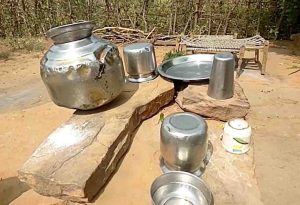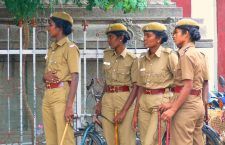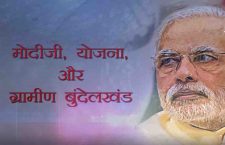The Dala community of Panna district in Madhya Pradesh, living on the edge, quite literally, of the world-famous Panna Tiger Reserve, are a forgotten people.
This story has a beginning in 2005, when the south-west monsoons caused disastrous floods across Madhya Pradesh and parts of Uttar Pradesh, leaving Panna and Damoh most severely affected. The Ken river was the picture of fury and destruction marking above-dangerous water levels and the inclement weather had ensured even air-drops over Panna impossible.
It left lakhs of people homeless in its wake, of which the Dala community was a part – they were displaced from their homes in the matter of a few days. As part of the government’s rehabilitation programme, the community were relocated to a small village in Bandhikala gram panchayat, which over time, came to be known as Dala village.
For the past 13 years, the people of Dala village have been putting back the pieces of their life, turning it into a habitable space, something to call home. But last month, this has shattered once again – the community is being asked to pack up and go. The reason this time is not a natural disaster though; it is an official notice from the Forest Department asking the community to relocate since they’ve been encroaching on the Panna Tiger Reserve lands. The notice further states that the department is willing to consider explanations from the community, the reasons for their “encroachment”, which will be evaluated for veracity. Locals insist that this is mere fine print, and evacuation is imminent – officials have already been visiting their village to do their mark-ups.
The claim of the Forest Department is that the Dala village is part of the buffer zone of the Panna Tiger Reserve. While it is common practice to demarcate the area surrounding the core area of a biosphere reserve as the “buffer zone” for carrying out ancillary activities of biodiversity conservation, the concern here is that this has been slapped onto the Dala community out of the blue.
Rakesh, who’s been farming in Dala for decades, tells us that he’s been warned by the officials to stop, else face the consequences, “They say they’ll lodge a complaint against me. And they’re saying that what I’m doing is gair-kanooni kabza (illegal squatting).” Haricharan, another local, questions the buffer zone demarcation, “Apparently, it’s a new thing. Now they’re saying it’ll be across the river. So, what are those people supposed to do who live here?” While another villager Nirbhay says, “They ask for an aadhar – a reason, or basis – for which we’ve been living here. But the babu wasn’t listening to us when we went to the office to explain. For him, it’s clear. Notice toh katwa diya hai (the notice has been circulated), so that’s that.”
The fact remains that neither the local administration nor the Forest Department is willing to take any responsibility for the people to be ejected from their homes almost overnight, leaves an entire community of approximately 20-odd families both helpless and homeless. As Nikita D’Cruz, a social worker working in Panna says, “When the government takes responsibility of rehabilitating a community – who are driven out of their homes due to floods or some other calamity – does that responsibility end at simply providing an alternate place to live? The Dala community is stuck in a catch-22 like situation with the Forest Department on one side and the district administration on the other. Neither wants to take any responsibility and they are simply passing the buck.”
According to the villagers, Kusum Singh Mehdele, currently a cabinet minister with the government of M.P., elected to the assembly from the Panna constituency, was the then-MLA who had been assigned the rehabilitation task. Mehdele, though now claims, off camera, that she never set up the Dala village. The people of Dala continue to contend that it had been her and even share that they had initially wanted to name the village after her, as a gesture of gratitude. In 2018, however, the village does not fall within MP Mehdele’s constituency, who promptly put us onto the sitting MLA, Mahendra Baagri.
The regional manager of the Forest Department, K.S. Bhadoriya, wasn’t of much help to our investigation. Not only did he seem too busy to answer any questions about the Dala village, he offered only evasive responses at best, citing “laid down procedure” to justify the actions of the Forest Department. “We are only following the statutorily laid down procedures to remove encroachers and reclaim encroached land. Regardless of their having lived here for many years, if it is illegal encroachment, they simply cannot stay,” he said at first, adding that if we found any legal tips to the contrary, we should inform him. “Let us know if you find any such laws,” he exhorted, semi-amused, barely looking up from his phone.
As per the law on squatters’ rights, a squatter acquires legal rights over a property if it remains unclaimed by the rightful owner for a period of 12 years. In the case of government-owned property, however, the prescribed period is 30 years. So while it may be legal for the government to claim this land, it also has a duty under the Land Acquisition Act (2013) to resettle and rehabilitate the people it displaces while acquiring their property. In fact, the act lays down a participative procedure wherein the consent of the displaced people is to be taken, a comprehensive social impact assessment is to be carried out, after which they are to be relocated to another place and the government is to assist in rehabilitating them as well. Sadly, in the case of the Dala village, this Act has been conveniently forgotten.
For now, current MLA, Mahendra Baagri has suggested finding a middle ground between the Forest Department and the local administration. “The only thing that can be done now”, he says, “is that the administration can go and check whether we actually rehabilitated this community to this place, officially, or have they encroached on their own. The Forest Department and the Revenue Department must conduct a joint inspection to ascertain who this land really belongs to. In case it does belong to the Forest Department, then we could perhaps exchange it with the Revenue Department by giving them an equivalent amount of land belonging to the Revenue Department. Or else, what we can do is allot the Dala community designated pieces of land for them to build their homes and settle down. This is the only way to settle this once and for all, or it will remain an endless cycle construction and demolition forever.”
This Khabar Lahariya article first appeared on The Wire.


